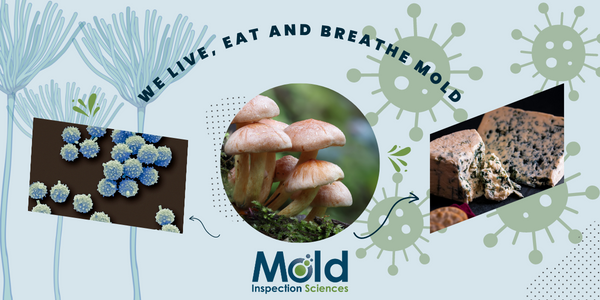The Importance of an Outside Control Sample
Mold spores are everywhere and it is important & necessary to have a baseline sample to assess mold within the air.

Part of a proper mold investigation, is collecting ambient air samples in relation to suspect conditions within a home. This helps us determine if there are “suspect” or “elevated” airborne mold spore types and/or concentrations. This not only helps us in determining if hidden mold sources are likely, it helps us determine the overall impact mold is having on the environment and in turn allows us to give proper recommendations for remediation (the removal of mold).
To properly asses the indoor conditions, we must first collect an outside control, or baseline sample. This is necessary because we always have to remember that airborne mold spores are everywhere, so even a home that does not have a mold “problem” will have some mold spores within the air. For a sample to be considered “normal” it should be somewhat consistent with the outside control sample taken that at that same day and time. In general indoor spore counts should be roughly 75% of the outdoor counts and usually proportionately similar in terms of spore types.
We do get asked all the time though “well, why can’t we just use averages from previous samples to determine a baseline?” Great question, and at first glance it does seem like a reasonable method, but in reality it just doesn’t work that way. Averages are used to some degree in the analysis of air samples, but an average is just that, an average. The spore types and concentrations in our environment can swing drastically due to multiple factors that influence our environment. Mold is a living organism, and therefore it reacts to its environment conditions. So, if it has been wet and rainy out and the mold sources are, let’s say happy, then they may not be actively sporelating and releasing mold spores into the air. On the flip side of that, when conditions are dry, mold sources typically begin sporelating in an effort to spread out and find additional water and/or food sources. On windy days, we sometimes see very high spore concentrations. And when there is snow on the ground, we will typically see very low spore concentrations.
As a result of all of these influencing factors, it becomes apparent that averages just do not give us enough information to properly assess indoor airborne mold conditions. To fully understand if there is a mold “problem” within a home, it is important to have as much information as possible. And a big piece of information that helps us do that, is analysis of airborne mold spore concentrations as compared to an outside control sample. If you believe you have a mold problem, consider engaging a competent and certified mold investigation specialist to perform a thorough mold investigation and proper mold sampling.




